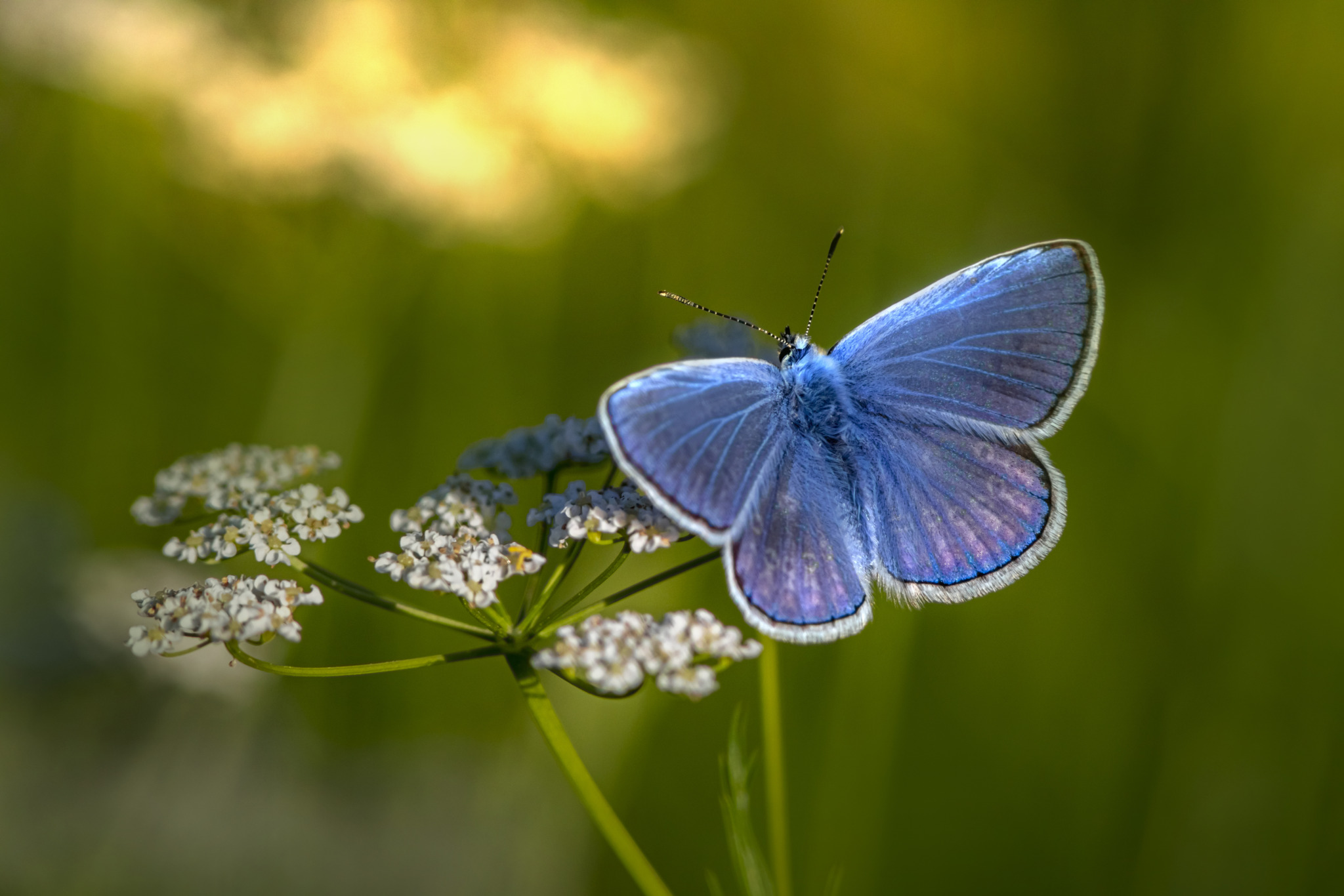The Mazarine Blue (Polyommatus semiargus) is a butterfly species belonging to the family Lycaenidae. Here are some key characteristics and information about this beautiful butterfly:
- Appearance: The Mazarine Blue is a small butterfly with a wingspan ranging from 22 to 30 millimeters. The upper side of the male’s wings is a vivid, iridescent blue, with thin black margins and a row of black spots along the outer edges of the hindwings. Females are typically brown with blue markings near the base of the wings. Both sexes have orange and black markings near the wing edges. The underside of the wings is gray-brown with white and black spots, providing camouflage when the butterfly is at rest.
- Distribution: The Mazarine Blue is found across much of Europe, including central and southern regions, as well as parts of North Africa and Asia. It inhabits a variety of grassy habitats, including meadows, pastures, woodland clearings, and roadside verges.
- Habitat: These butterflies prefer open habitats with plenty of sunlight and areas of short, sparse vegetation. They are often found in grasslands and meadows where their larval host plants grow abundantly. They are also known to inhabit coastal dunes, moorland, and alpine meadows.
- Lifecycle: The lifecycle of the Mazarine Blue consists of four stages: egg, larva (caterpillar), pupa (chrysalis), and adult butterfly. The female lays her eggs on the leaves of specific host plants, including various species of legumes such as clovers (Trifolium spp.) and vetches (Vicia spp.). The caterpillars hatch from the eggs and feed on the leaves of the host plants before pupating and emerging as adult butterflies.
- Behavior: Mazarine Blues are active during the warmer months of the year, typically from spring to early autumn. They are strong and agile fliers, capable of rapid flight and maneuvering. Adults feed on the nectar of various flowering plants, including thistles, knapweeds, and buttercups.
- Conservation: The Mazarine Blue is not considered globally threatened, although local populations may face threats from habitat loss, agricultural intensification, and changes in land management practices. Conservation efforts focus on preserving and restoring grassland habitats, including the conservation of native wildflower species that serve as nectar sources and larval host plants.
Overall, the Mazarine Blue is a beautiful and ecologically important butterfly species that adds color and vibrancy to grassland ecosystems across its wide geographical range. Efforts to conserve its habitats and promote sustainable land management practices are crucial for ensuring the continued survival of this delightful insect.
Visited 877 times, 1 visit(s) today
Views: 1417
Subscribe to the newsletter:
